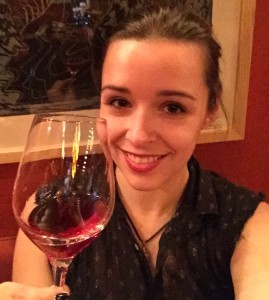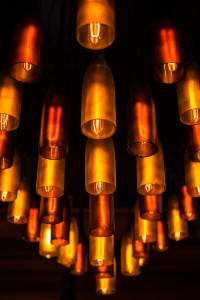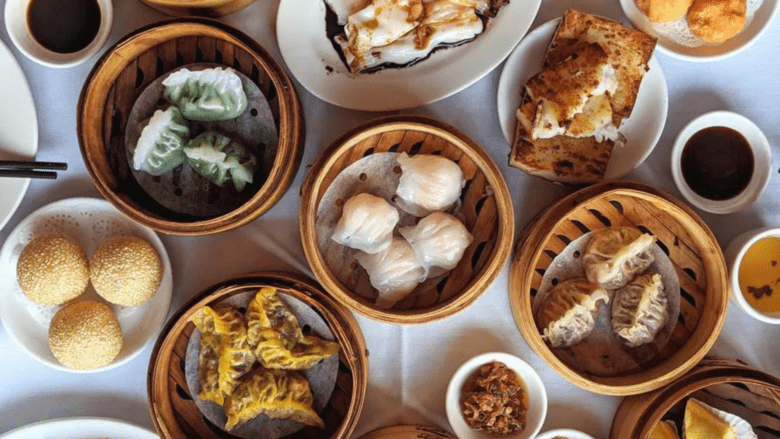 BISq Wine Director Anne Thompson writes her menu with two criteria in mind: the wines should be made to reflect and respect the environment they come from, and they must be interesting enough to broaden guests’ appreciation of wine as a whole. Thompson, who also runs the wine program at sibling restaurant Bergamot, curates a French-heavy list at BISq that complements the charcuterie-heavy menu. “The 45th [line of latitude] is our boundary,” says Thompson. “We do everything above that.” The regions she turns to, like the Loire Valley, Beaujolais and the Jura, offer off-the-beaten-path wines that showcase their terroir.
BISq Wine Director Anne Thompson writes her menu with two criteria in mind: the wines should be made to reflect and respect the environment they come from, and they must be interesting enough to broaden guests’ appreciation of wine as a whole. Thompson, who also runs the wine program at sibling restaurant Bergamot, curates a French-heavy list at BISq that complements the charcuterie-heavy menu. “The 45th [line of latitude] is our boundary,” says Thompson. “We do everything above that.” The regions she turns to, like the Loire Valley, Beaujolais and the Jura, offer off-the-beaten-path wines that showcase their terroir.
To start unpacking what makes a wine interesting and reflective of its origin, look at the list’s leading lady, the Loire Valley. Situated in the northwest of France, the Loire is famous for growing Chenin Blanc and Cabernet Franc, versatile grapes that produce wines of wildly disparate style. “It’s a cool place to get to know a little bit better,” says Thompson. “For being just one region, it’s really like ten different regions. I like introducing people to the grapes and the many different personalities that they have.”
Thompson gathers some of those personalities in the ‘Red(ish)’ section of the wine list: light, charcuterie-friendly glass pours that include a couple of Cab Francs as well as rosé or Gamay. She offers other, more structured iterations of the Cabernet Franc grape by the bottle. “If you want to sink your teeth into some red wine,” Thompson says, “certain vintages in Chinon made these crazy, very big, very assertive wines, like the Jaulin-Plaisantin Chinon ‘Enfer’ ($59), a big guy that’s been doing really well for us.”
 Looking beyond the Loire, Thompson highlights Beaujolais alongside Champagne in the ‘Vins de la Joie’ (Joyful Wines) section of the list. Okay, Champagne makes sense—plenty of folks like to pop some bubbly on a happy day. But Beaujolais? It’s a historically humble region (maligned by some, thanks to the antics of Georges Duboeuf) that produces red wine made from the Gamay grape. Top-notch Beaujolais is good, but doesn’t have the same prestige as Champagne. And yet, Thompson explains, it’s a perfect red for the holiday season. “Beaujolais has a very happy connotation for me. I drink [Beaujolais] every year for Thanksgiving. You can drink it with a huge variety of food, and they’re usually inexpensive.” She’s right—the price tag doesn’t hurt, with a bottle of 2013 Moulin-à-Vent going for just $49.
Looking beyond the Loire, Thompson highlights Beaujolais alongside Champagne in the ‘Vins de la Joie’ (Joyful Wines) section of the list. Okay, Champagne makes sense—plenty of folks like to pop some bubbly on a happy day. But Beaujolais? It’s a historically humble region (maligned by some, thanks to the antics of Georges Duboeuf) that produces red wine made from the Gamay grape. Top-notch Beaujolais is good, but doesn’t have the same prestige as Champagne. And yet, Thompson explains, it’s a perfect red for the holiday season. “Beaujolais has a very happy connotation for me. I drink [Beaujolais] every year for Thanksgiving. You can drink it with a huge variety of food, and they’re usually inexpensive.” She’s right—the price tag doesn’t hurt, with a bottle of 2013 Moulin-à-Vent going for just $49.
One of Thompson’s first loves is the Jura, a region that features prominently on her bottle selection. “When we’re talking about putting together a terroir-driven wine list,” Thompson says, “the Jura is kind of a no-brainer—it’s defined by terroir.” Lying just east of Burgundy and west of the Alps, the Jura produces reds using grapes like Poulsard, Trousseau or Pinot Noir—these wines tend to be lighter-bodied, earthy and funky. Jura whites are made from Savagnin or Chardonnay, and tend to be rounder, musty, full-bodied wines.“Wines from the Jura are still not on everyone’s horizon,” says Thompson, “but I think they should be.”
To the uninitiated, any wine list can appear daunting. Now subtract those familiar California Cabs and Argentine Malbecs (and add some tricky French geography) and it’s easy to get lost in the sea of wine geek argot. Don’t despair—BISq’s staff is there to help guests discover those exciting wines that might otherwise fly under the radar. “I hate to hear that people feel intimidated by a wine list,” says Thompson. “If you see something on the list you’re not familiar with, that’s a great opportunity to start a conversation. As long as guests are willing to say, ‘This is what I usually drink, this is what I’m in the mood for, can you suggest something?’ they’re going to end up having a good time.”

















